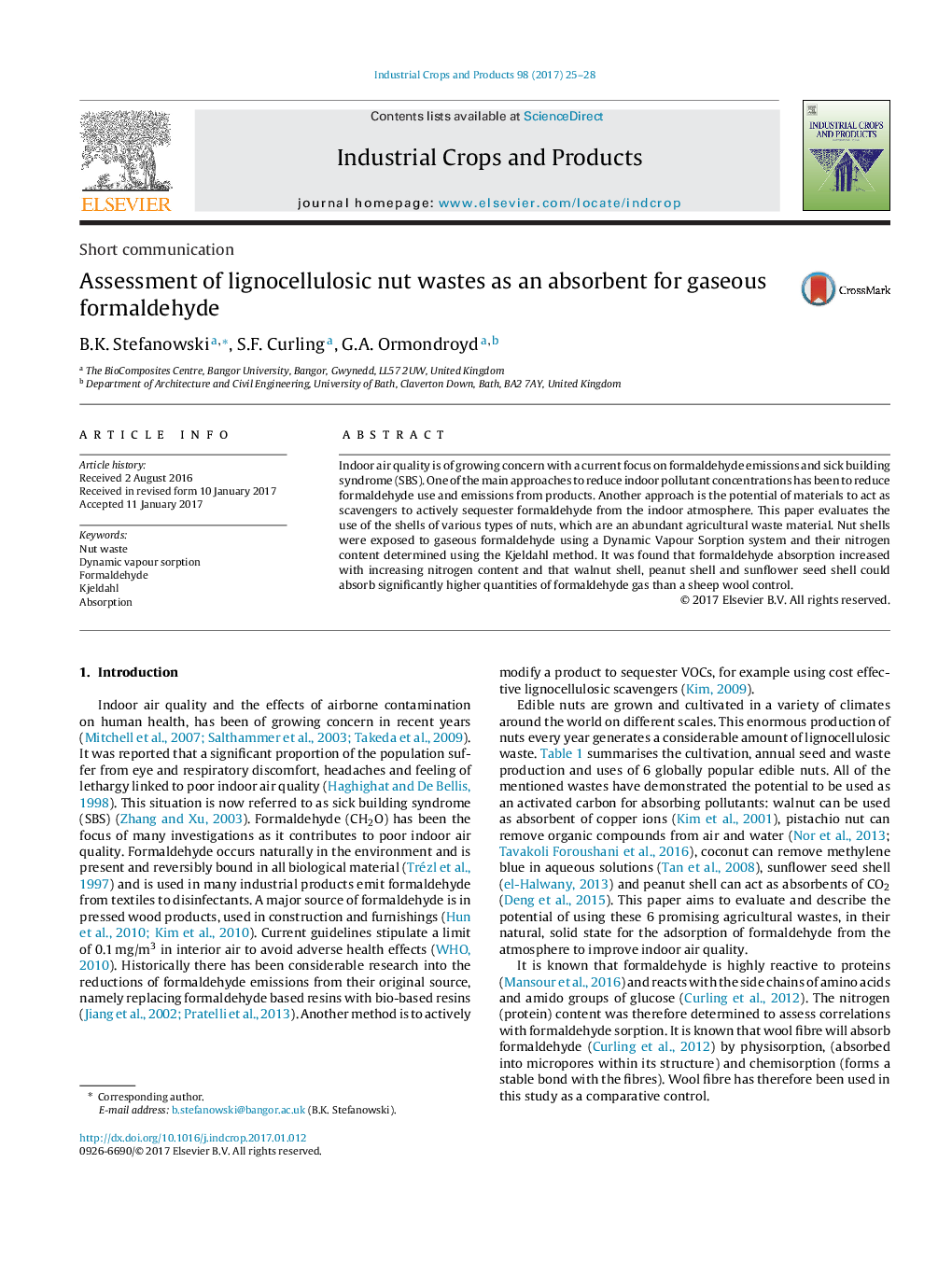| Article ID | Journal | Published Year | Pages | File Type |
|---|---|---|---|---|
| 5762209 | Industrial Crops and Products | 2017 | 4 Pages |
Abstract
Indoor air quality is of growing concern with a current focus on formaldehyde emissions and sick building syndrome (SBS). One of the main approaches to reduce indoor pollutant concentrations has been to reduce formaldehyde use and emissions from products. Another approach is the potential of materials to act as scavengers to actively sequester formaldehyde from the indoor atmosphere. This paper evaluates the use of the shells of various types of nuts, which are an abundant agricultural waste material. Nut shells were exposed to gaseous formaldehyde using a Dynamic Vapour Sorption system and their nitrogen content determined using the Kjeldahl method. It was found that formaldehyde absorption increased with increasing nitrogen content and that walnut shell, peanut shell and sunflower seed shell could absorb significantly higher quantities of formaldehyde gas than a sheep wool control.
Related Topics
Life Sciences
Agricultural and Biological Sciences
Agronomy and Crop Science
Authors
B.K. Stefanowski, S.F. Curling, G.A. Ormondroyd,
